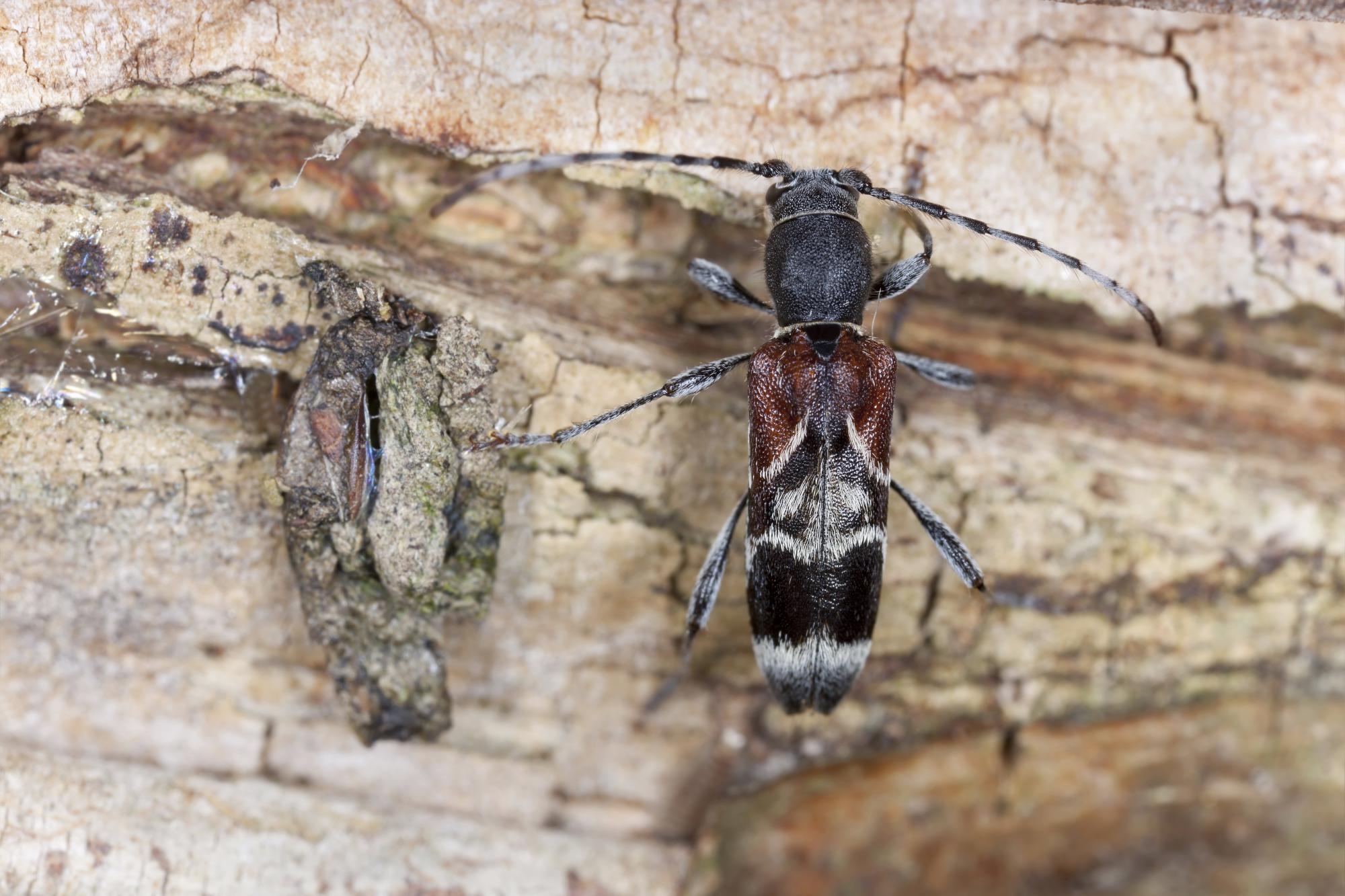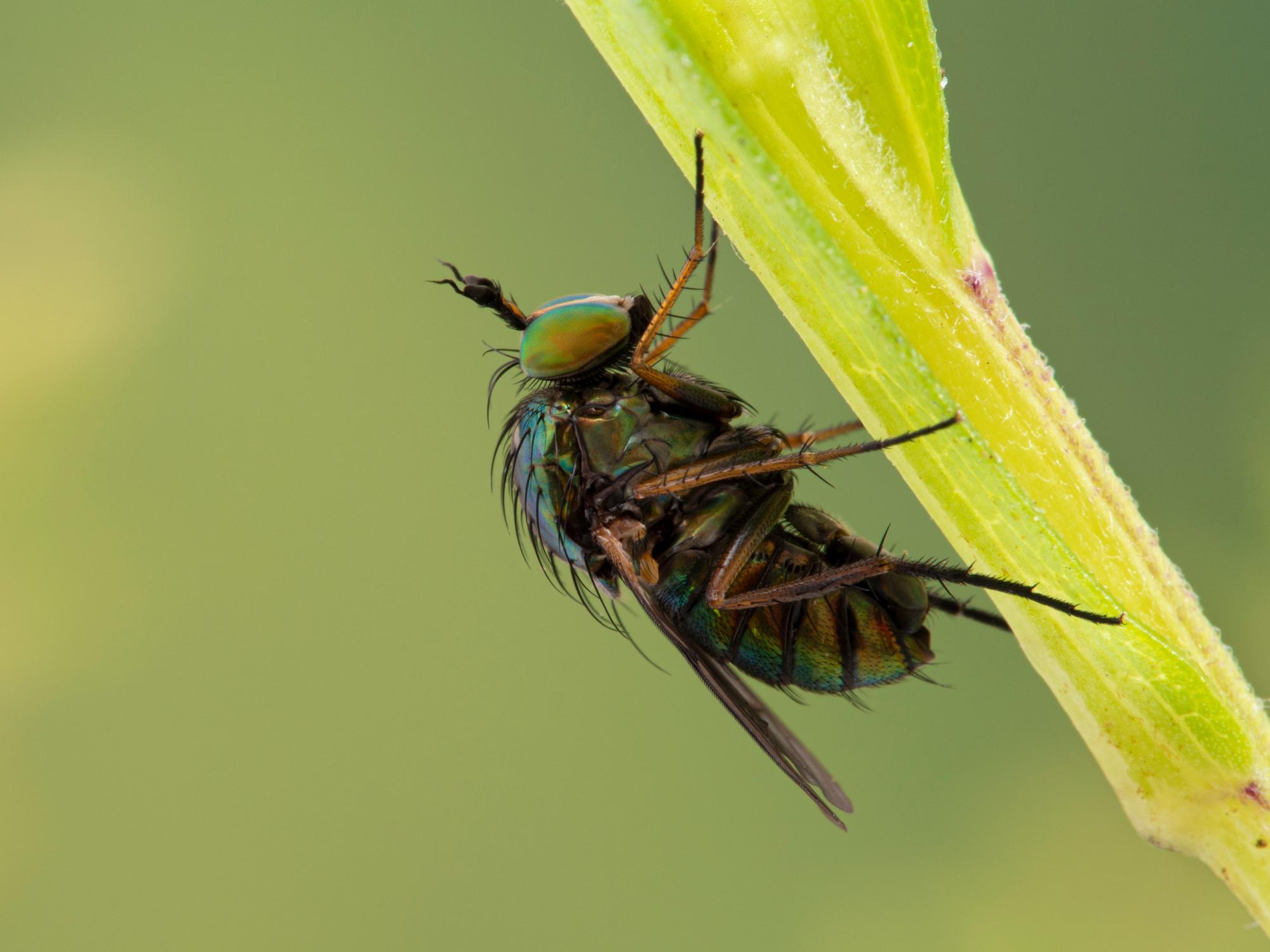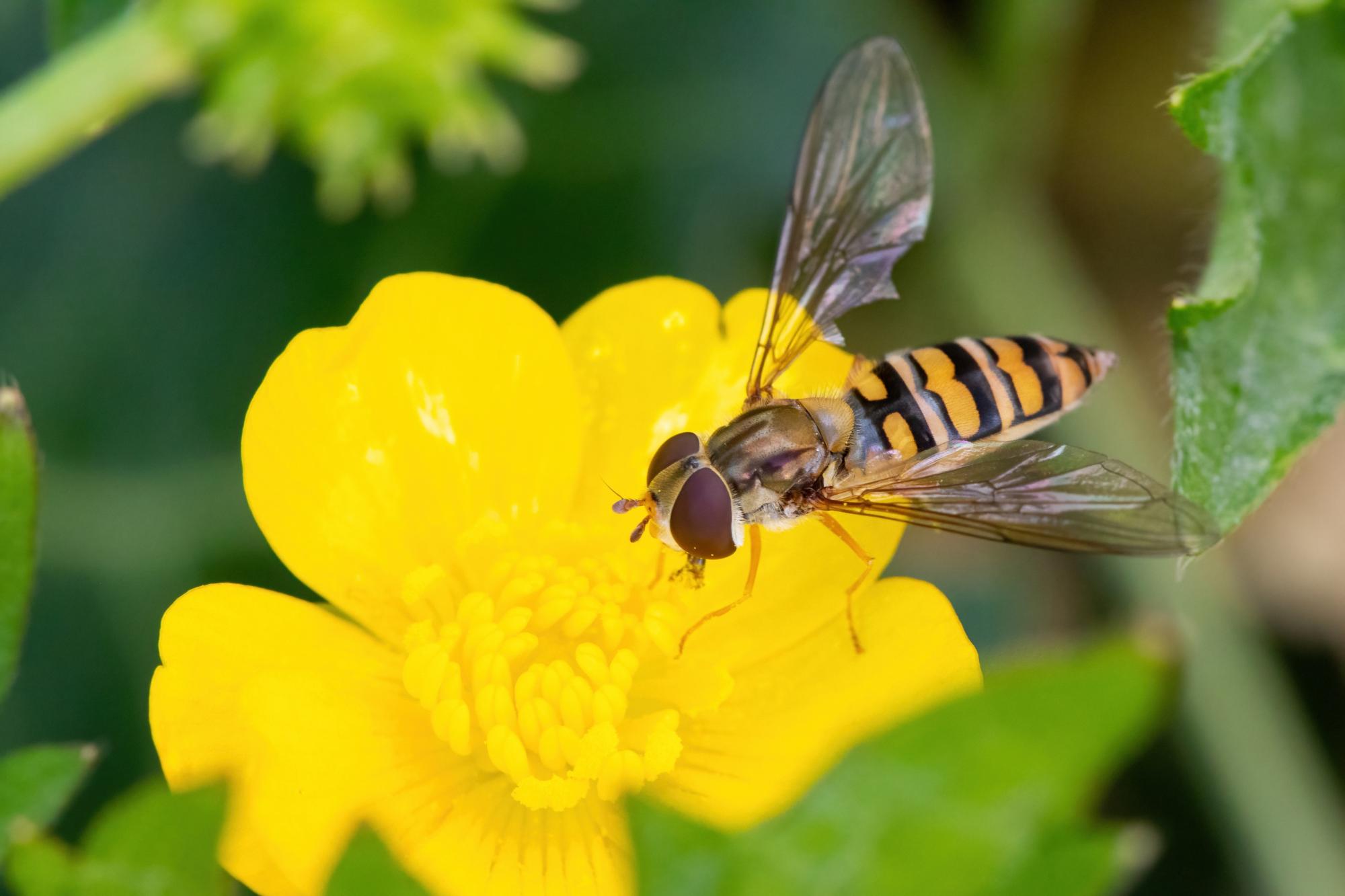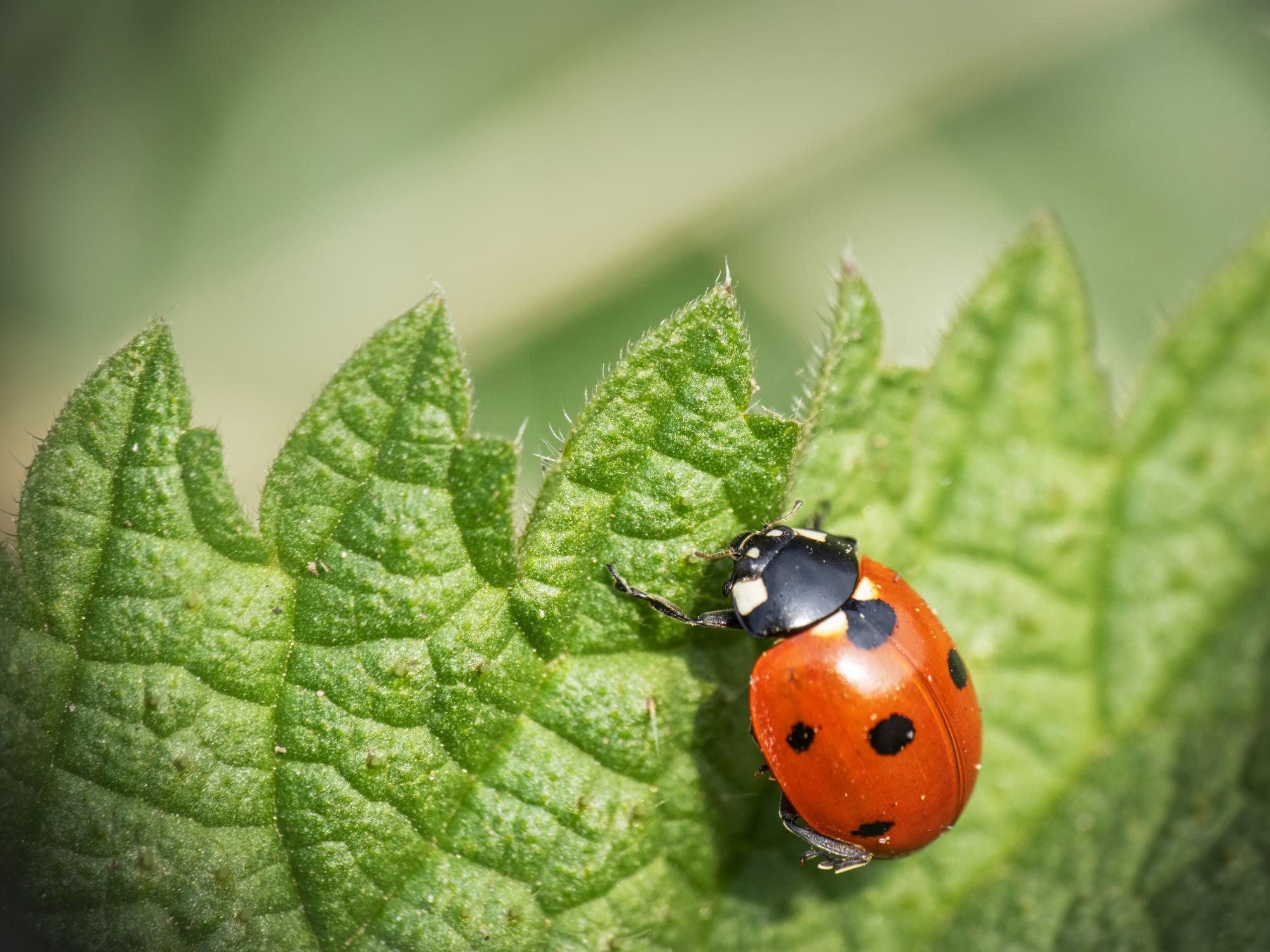
Invertebrates found in the Forest
There are many invertebrates in the Forest, and we regularly monitor the species that call the woodlands home. Along with the more obvious invertebrates, there are some rarities including Nationally Scarce species. Discover more about these fascinating creatures and the species you might spot in the Forest.
What is an invertebrate?
An invertebrate is any animal that does not have a backbone. This includes a massive number of very different animals: insects (e.g. flies, beetles, and bees), arachnids (spiders and scorpions), molluscs (snails and slugs), crustaceans (crabs and woodlice), worms and many others. At least 90% of animal species recorded are invertebrates.
Monitoring invertebrates in the Forest
In the Forest, there are many obvious invertebrates you will see and we already survey many of them. Butterflies are an insect abundant across the Forest and we now do 30 transects to record these. Bumblebees and odonata (dragonflies and damselflies) are also insects which we widely survey. There are of course many other inverts which you will see but we do not survey, such as hoverflies, snails, and spiders. In comparison to butterflies, bumblebees and odonata, many of these other invertebrate species can be difficult to identify and need an expert to survey properly.
In 2021, invertebrate experts Phil Ward and Mike Paskin surveyed several areas of the Forest, recording each site twice from spring to summer. They surveyed each by walking a number of transects, sweep-netting, turning stones, checking areas potentially harbouring invertebrates, and visually searching flowers along each transect. In total across all sites, they found 423 different species of invertebrate.

Nationally Scarce species of invertebrates
Although most invertebrates found were common species, some rarities were found, including National Scarce species.
Bombardier beetle
Perhaps the most interesting of these was the bombardier beetle (Brachinus crepitans). This Nationally Scarce beetle (recorded in only 15 - 100 10km grid squares across the UK) is most often found on dry and open grasslands on calcareous soils, and can be found across southern England, primarily coastally. The beetle’s name comes from its amazing defence mechanism, where it fires burning liquid from its abdomen towards its attacker!
Rufous-shouldered longhorn beetle
Another impressive Nationally Scarce beetle recorded was the rufous-shouldered longhorn beetle (Anaglyptus mysticus). This beetle is saproxylic – it is dependent on dead or decaying wood to complete its life cycle. This habitat is also incredibly important for many other beetles, like stag beetles.
Long-legged marsh fly
The long-legged marsh fly (Dolichopus arbustorum) has been found in a couple of locations in the Forest, which were interesting records as this species relies on open wetlands (like ponds in grasslands) which both sites have little of. It may be that they flew in from somewhere nearby or are breeding in a small area of either site, giving us an indication of where it may be good to complete some pond restoration work.
Umbellifer longhorn beetle
The final Nationally Scarce species recorded was the umbellifer longhorn beetle (Phytoecia cylindrica), whose larvae only feed in the stems of umbellifers like cow parsley.

Flies
An impressive fly found was the four-barred major (Oxyxera rara), a striking yellow and black soldierfly. Soldierflies were present across all sites, with most species found in the UK either similar in colour to the four-barred major or an iridescent blue-green.
Hoverflies can look superficially similar, but of course are experts at hovering. Over 20 different species were recorded across the Forest by Phil and Mike, including some species which even an amateur can identify, including the batman hoverfly (Myathropa florea) which is named after the batman symbol which can be seen on the top of its thorax. Many of these species are yellow and black to mimic stinging wasps and bees; the wasp beetle (Clytus arietis) also mimics these.

Hymenoptera
Many hymenoptera – wasps, bees, ants, and sawflies – were also recorded, including six bumblebee species, three of the superficially wasp-like nomad bees and five of the Andrena mining bees. Of the latter, the somewhat rare large gorse mining bee (A. bimaculate) was found, although the ashy mining bee (A. cinerea) is the species you are most likely to recognise in your garden.
Spiders and beetles
Over 25 spider species were recorded and over 100 beetles. Of these, the variable longhorn (Stenocorus meridianus) was perhaps the most impressive as one of the UK’s largest beetles. The one you are most likely to see in the Forest is the 7-spot ladybird (Coccinella septempunctata) or the thick-legged flower beetle (Oedemera nobilis), a small green beetle often seen on flowers.

Providing habitats for invertebrates to thrive
Now that we have this data from our transects, we can start managing our habitats to protect these species. Some wetland enhancement is needed to help these at some of our sites, so we have opened up an overgrown pond in one area of the Forest. Open grasslands are needed for the bombardier and to help the grizzled skipper butterfly, so we are working to improve the biodiversity of our grasslands for both invertebrates and grassland flora.

How you can help
If you would like to help us survey invertebrates, we have many butterfly, dragonfly, and bumblebee surveys across the Forest that you can take part in. To find out more, sign up to our volunteering newsletter here.
If you happen to spot any of the less well-recorded insect groups on your walks, then we would love to know. Tag us on Twitter, Instagram or Facebook or email info@heartofenglandforest.org



